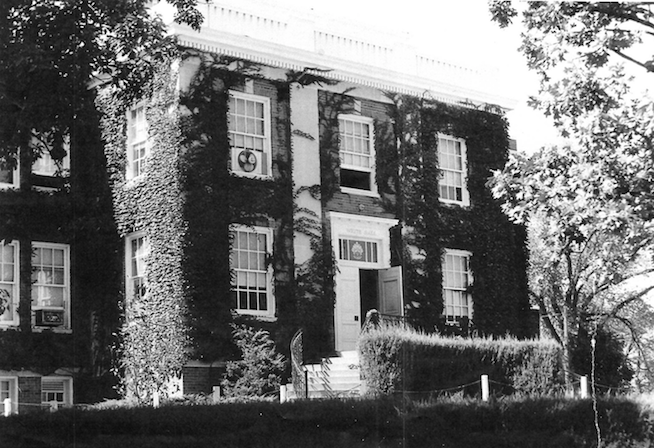 Every school has what the alums regard as a Golden Age…
Every school has what the alums regard as a Golden Age…
A period when students, faculty, and administration were working in unison to produce a good education for its graduates, with lasting memories and friendships as happy by-products of that era.
In speaking to Pembroke Hill grads, there’s surprising unanimity among them that the years 1955 to 1965 were a decade when the school – then known as Pembroke Country Day and still all-male – was enjoying such a time.
This is not to say that those who came before or after didn’t enjoy their experience there. It’s clear, though,that the disruptive and polarizing atmosphere of war and depression which marked other epochs was happily absent during that period. By 1965, when I started, Vietnam and the counter-culture were already on the horizon and the post-war consensus was beginning to fray.
I read an essay by the novelist Mark Helprin, in which he talks about his own time at a very similar prep school, where the curriculum was an equal mix of liberal arts and contact sports. His days there, during this exact same time frame, were given coherence and context because there was a “canon”- a widely accepted body of knowledge – that one at least aspired to master.
By the same token, at Pem-Day the curriculum had been fixed since time immemorial, with the grade cards unchanged from the 1920’s because the course offerings were the same. This added to the sense of tradition and continuity, as did many long time faculty members and the beautiful Georgian architecture of the buildings. (Now, sadly, all replaced!)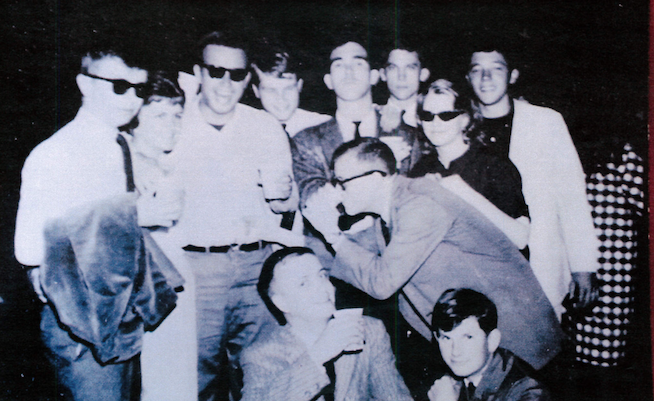 The close bonds between those who went to school together in that era have been noted for some time by people outside that charmed circle. In 1982, the Kansas City Star ran a lengthy article, even by the generous standards of the paper 35 years ago, about the 25th reunion of the Pem-Day class of 1957 (“25 years later: Reunion recalls rebellious lost youth”, 6-16-82, K.C. Star)
The close bonds between those who went to school together in that era have been noted for some time by people outside that charmed circle. In 1982, the Kansas City Star ran a lengthy article, even by the generous standards of the paper 35 years ago, about the 25th reunion of the Pem-Day class of 1957 (“25 years later: Reunion recalls rebellious lost youth”, 6-16-82, K.C. Star)
The article talks about how there was a group of friends centered on that class, but with members from other schools in the area—Southwest, Shawnee Mission (“there was only one then”, the Star explained), Sunset Hill and Barstow. Known as the Bohos (for “Bohemian Hobos”), the group was thought of as wildly anarchic at the time but their exploits seem laughably mild by latter day standards.
Michael Lynch, Shawnee Mission ’56, was a charter member of this set and recounted the famous Southside Bust of 1958, where several members were arrested for the heinous crime of drinking beer in Loose Park. Lynch recalled how the police van drove them past Milton’s Tap Room, the Boho’s unofficial headquarters, on the way downtown to jail, and how they gave a big cheer as they passed.
Milton’s, the “Midtown haven of good jazz and cheap beer-“as the Star article succinctly described it- represented more than just a favorite young peoples’ hang-out. Jazz itself, with its complexity, had a more cerebral appeal than rock and roll, and thus largely defined this group. Count Basie and Charlie Parker were particular favorites.
Like so much else of the PCD ethos, this prevailing taste in music was unabashedly, proudly elitist.
As another leading member of the group, Jay Nichols, said in the 1982 Star article: “We were perceived as being extremely radical from the outside and a lot of parents of the other kids basically didn’t want their kids to have anything to do with us. . . . .It was all very tame, nice stuff from the inside. We’d drink a little beer, sit around and talk about sports cars and play a little chess. But somehow it came to be perceived by other people as being dangerous.”
Perhaps our elders’ concerns were not so much with the supposed rebellious spirit of the group but with the fact that it found its outlet in more subtle and thus more lasting and pernicious forms than the other teen age fads of that era.
Bobby socks, hot rods and rock and roll?
None of that simple minded, greasy kid-stuff for us! We were instead into “jazz, literature, strong drink and sports cars.” Ibid (The Jaguar XK 140 was a particular obsession.)
Juvenile delinquency? Rebels without a cause?
We were rebels with a cause: We didn’t want to defy The System, we wanted to game The System. We were less wise guys than wised-up guys, i.e. seeking discernment or understanding about how things actually worked.
Which is not to say that a certain amount of sarcastic or cynical attitude didn’t come out on occasion! As late as 1967 or 1968, all the other local high schools would have a student call into WHB, the local rock and roll station, with totally earnest reports on what was happening at their school, i.e. “Mary Smith was Homecoming Queen.” Or “We beat Ft. Osage for the State III A Title.”
By contrast, Pem-Day’s correspondent would always “sarc it up”, i.e. play it for irony by naming, for example, as “Student of the Week” someone who’d just had a run-in with the Head Master.
(I was so honored 50 years ago this week for putting out a right-wing underground paper. ‘Scurrilous journalism!” the chairman of the English Department, Joel Martin, Harvard ‘65, thundered!)
Instead of naming as our favorite hit song one of the bland, predictable Top 40 offerings played on WHB, the Pem-Day correspondent (Ray Goldsich ’68), would come up with an obscure R&B number-heard only on KPRS (the ‘Colored Peoples’ radio station as it then billed itself) and then only during the noon jazz hour, e.g. “Back at The Chicken Shack” by Jimmie Smith. Either that or some obviously tongue-in-check choice like Art Linkletter’s “A Letter to a Teenager”, a.k.a “We love you. Call collect.”
To give another example, the Southwest kids would play football on Ward Parkway in the median strip north of Meyer Circle.
The wetter and more miserable the weather the better, especially if they could pose for girls driving by as macho dudes covered with mud, having been tackled repeatedly.
We “daisies” (a.k.a. cake eaters), by contrast would wait patiently for the first nice day, then hold a croquet game on the same spot, followed by high tea, everyone decked out in white flannels and seersucker.
Naturally this led to some rude comments from burly young men in Camaros, questioning our sexual preference, but that only made it more rewarding.
(“Summer afternoon-summer afternoon; to me those have always been the two most beautiful words in the English language. “Henry James)
While I’ll admit that all this may sound a little precious to outsiders, this sensibility-wry, sardonic, and self-deprecating-came as a revelation to newcomers to the school. That the privileged status that produced it had to be justified and earned was a realization that came later.
One person who recognized that cost was the late Robert D. Sutherland, Sr. my cousin. Bob was nine years older than I was but was always a role model for me growing up.
In love with cars at an early age, Bob (PCD ’61) in adulthood put together an incredible collection of vintage racing cars, in many cases scrounging the parts and rebuilding them from the ground up. He showed and raced these cars all over the United States and the world, making friends wherever he went. Although he’d moved to Colorado after college, he returned to Kansas City often and had a number of friends here, several of who are readers of this blog.
He is best remembered for organizing The Colorado Grand, a 1,000 mile road race for pre-1960 cars, held every fall on a route running through the most picturesque parts of the state. The money it raises goes to charities, including a fund for the widows and orphans of members of the Colorado Highway Patrol killed in the line of duty.
 Bob supported other charities like Pieta House AIDS Hospice and the Hospice of St. John’s. After his death in 1999 from an aneurysm, his family created the Robert D. Sutherland Memorial Foundation to help people suffering from bi-polar disorder.
Bob supported other charities like Pieta House AIDS Hospice and the Hospice of St. John’s. After his death in 1999 from an aneurysm, his family created the Robert D. Sutherland Memorial Foundation to help people suffering from bi-polar disorder.
Another very interesting Pem-Day grad during this era was D. Brook Bartlett, U.S. District Court Judge for the Western District of Missouri. A former Assistant Missouri Attorney General, attorney in private practice, then federal judge, Bartlett’s entire adult life was dedicated to the law.
When I think of Judge Bartlett and his Kansas City Establishment background, I thought of the following passage from the Sinclair Lewis novel, Babbitt, written in 1926 after the author spent an extended stay in Kansas City studying and analyzing local society. He described the eponymous hero, George F. Babbitt, a middle class realtor, and his encounter with the old money banker William Eathorne, scion of a family dynasty in the fictional Zenith, Ohio:
“Out of the dozen contradictory Zeniths which together make up the true and complete Zenith, none is so powerful and enduring, yet none so unfamiliar to its citizens as the small, still, polite, cruel Zenith of the William Eathornes; and for that tiny hierarchy the other Zeniths unwittingly labor and insignificantly die.”
I would substitute the word “stern” for “cruel” in that last of attributes but otherwise I think that description applied to his background.
When Bartlett was at Pem-Day (he graduated in 1955), he served as judge of the Student Honor Court, and he presided at the trial of a fellow Pem-Day student charged with cruelty to animals. (The miscreant had killed a stray cat in a wanton way.)
After a full blown trial, with witnesses and a jury, the wrong doer was convicted and sentenced. The sentence imposed by the 17 year-old Bartlett, expulsion, was accepted and carried out by the school authorities.
Forty years later, Bartlett, by now a federal judge, presided over another trial, this time of his fellow Republican, Missouri Attorney General William Webster, for malfeasance in office.
At the time of sentencing, Judge Bartlett excoriated Webster. In an epic tongue lashing, Bartlett pointed out to the defendant all the advantages he had growing up as the son of a powerful GOP state senator, Richard Webster of Carthage.Judge Bartlett rejected the sentencing recommendation of the prosecutor and imposed a harsher sentence on the hapless Webster.
The fact that Webster had probably done nothing that hadn’t been done since time immemorial by his predecessors in the A.G.’s office didn’t matter in the least to Brook Bartlett. Webster should have known better, Bartlett reasoned, and thus Webster had to pay a higher price for his wrong doing. (I’ve talked to law partners of Bartlett’s when he was in private practice and they tell me he was unyielding when it came to matters of principle. One told him, in exasperation: “You’re damn lucky to be worth $20 million dollars! Nobody else could afford to be so stubborn!”)
The force of Brook Bartlett’s personality lasted to the end of his career, when he died from a lingering illness at sixty-two.
He stayed on the bench to the very end, stoically doing his job, carrying out his duty to the community which had honored him by making him a federal judge. I’d like to think that this commitment to doing the honorable thing, no matter the price, was another thing we all learned at Pembroke.
Of course, most grads from that era did not live such high profile lives, which is not to say that a quieter, less public trajectory wasn’t just as rewarding and probably preferred by most.
Steve Pack, Pembroke Country Day Class of 1960, is living proof of the old adage: “Living Well Is the Best Revenge.” Steve’s father, the late Louis Pack, started the family salvage business after World War II.
The local powers that be promised Mr. Pack that he would have no labor problems but that he would have to deal exclusively with the Teamsters. He got the hint and the business took off three generations ago and has thrived under father and son’s management ever since. Currently functioning as a manufacturer, Steve’s Allied Materials & Equipment Co. makes a kaleidoscopic variety of products, shifting from one product to another in a response to changing consumer and government demands. (Dealing with the vagaries of the federal government contracting requirements has been an essential part of the Pack family business since WWII.)
Besides his success in a variety of different business ventures, Steve has contributed tremendously to our community as a philanthropist and been a pillar of his Jewish faith.
In his days as a “Boho”, Steve was known for the beautiful women he dated, who people still talk about. He’s been married for years to the gorgeous (and funny!) Karen and has three great adult children. Finally, Steve may be the luckiest of the three Pem-Day grads of his era I’ve profiled because he alone has reached the biblical three score and ten.
I know I’ve talked about the school’s style and attitude. Maybe it’s time to bring it back to how it performed its stated function, i.e. as a “college preparatory school for boys.”
The essential mission was to prepare young men to get admitted to and to succeed at colleges and universities all over the country. Bob Sutherland graduated from Yale. Brook Bartlett went to Princeton and Stanford Law; Steve Pack got his degree from the Wharton School of Finance at the University of Pennsylvania.
Check!
However, maybe the more important task was to build character. As our head master Calvin W. Atwood said, “Be yourself, but be your best self!” Or as a character in Walker Percy’s novel, The Moviegoer, put it: “I don’t quite know what we’re doing on this insignificant cinder spinning away in a dark corner of the universe. That is a secret which the high gods have not confided in me, yet one thing I believe and I believe it with every fiber of my being that in this world goodness is destined to be defeated. But a man must go down fighting. That is the victory. A man must live by his lights and do what little he can and do it as best as he can. To do anything less is to be less than a man.”





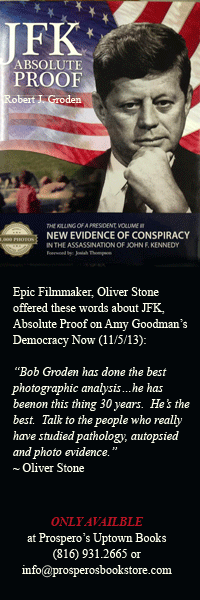

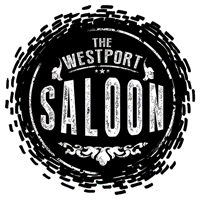
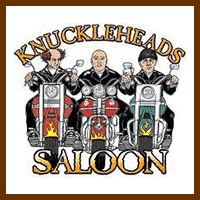

The commonality of the “revisionist,” light-hearted, high school experience…though expressed here as unique, is really universal…could be anywhere, within any clique. “What’s to painful, we simply chose to forget.” That is a good thing, because if we remembered accumulated pain, life could become unbearable. That said, this is a “good” share. Thanks.
Great piece, Dwight. The picture of the original White Hall, complete with the window fans and AC unit was classic.
Thanks for the trip, including the mention of the “Townies”. They didn’t win every game on Ward Parkway.
At 67, I too think those were halcyon days indeed. Our paths may have crossed at a few hundred yards or so, as I absolutely, used the “epithet” “Cake Eater” out of the window of my 55 Chevy to any and all scrubbed clean of the more earthy and dangerous contretemps visited on we exalted Ruskin Eagles.
This Eagle, will counter your Percy with our Macauley.
What better way to die, than against such odds,
For the ashes of our fathers,
For the temples of our Gods.
(I changed a few words, I like mine better.)
See ya at One Block West Cake Eater.
Nice article.
another wonderful piece…..I know/knew many if the classes ranging from 65 to 70 and while many are terrific people the pretension surrounding many others including one mentioned within this piece, who was then and still is insufferable. To many the school in around 1966 was better known for guys like Spanky Landis, Joe Gilbert and crew and their love for all things James Brown, shopping at Matlaws and Penners instead of Mr. Guy. Also, many of the talented area musicians’ said bye bye to that school over long hair issues, as that pre-Beatle bunch of left over establishment bores were still running things…
You’re absolutely right. We did lose some artistic types because of the “hair cut” game and through the work load,which was unforgiving towards some of the free spirits who landed there because of family tradition or parental ambition.On the whole,though,the place was surprisingly supportive of art,music and drama. I just wish I had had the wisdom and maturity to see how those fields could have contributed to a career in law and politics or just the enjoyment of life. I’m going to a Pembroke Reunion this weekend in New York with my son-in-law,PHS ’97. He feels very strongly that he left Pembroke fully equipped for the professional world and that his college experience was superfluous to his career on Wall Street. That’s a pretty high recommendation!
it is a terrific school and should be for the tuition charged…I dated and lived with a Sunset Hill gal and when I moved back here in 06, lived behind the old girls school…no matter what I still refer it it as Sunset Hill and the other as Pem Day…Is the term Pem Daisy even thrown around anymore…I don’t think “cake eater” is which applied to SW and SME as well…
Again, I sure wish I paid attention in school to write like you do..even though I don’t agree with much of what you write…
Thank you for the kind words. I think the nice thing about PCD was that it produced a variety of different views. It would have been pretty boring if we’d agreed on everything!
Why did the Sunset girls always prefer Rockhurst guys?
Because you were such nice boys,more polite and deferential.
I grew up with Bill Webster in Carthage. It was tradition that the class president had a Saturday Top 40 show on the local radio station. A whole 1000 watt weak flame, broadcasting from sunrise to sunset. I followed him in his tenure, hoping to be the next Clyde Clifford at KAAY, Little Rock.
Bill was a great guy. He and I went to Mark Twain Elementary, in Carthage. Zip Code EIEIO. You couldn’t read in public because people thought you were showing off.
But Pembroke or not, we shared the same dreams….
Thank you for reminding me that the Webster family hailed from Carthage. I also went to a school before Pem-Day where reading was suspect. I remember coming out after classes carrying a book on military history- a fairly masculine choice in reading material- and being ridiculed. I even remember the book itself, “Sixty Days That Shook the West”,about the fall of France to the Nazi Blitzkrieg in 1940, so vivid is the incident in my memory. I took the entrance exam to PCD at the first opportunity and enrolled that fall.
I tore Lovey away from the latest issue of “The New Yorker” to peruse this wonderful article. She read it and thought sure that hidden sarcasm had gone unnoticed and the Hon. Mr. Sutherland was pulling the wool over his reader’s eyes.
But no one can pull the wool over a Howell’s eyes, Cashmere maybe, wool, NEVER!
Your nostalgia for bygone days, where you and your friends “Summered” on median strips in the “City Of Fountains”, “Wintered” in exotic climes more salubrious to the delicate and refined constitutions of Pem Day Grads, Lovey and I laughed up the sleeves of our finery imagining mid western “salt of the earth” typs “Autumning ” and “Springing” in the streets of Grandview and Belton.
We both are missing our dear Leona so very much. Perhaps a mention of her in your next proffering?
Cherrio old chap!
The species Homo Preppus Americanus was indeed immortalized by Thurston Howell,III.Also in the running was a character from the late fifties/early sixties t.v.series, “Dobie Gillis”. This was the equally effete””Chatsworth Osborne,Jr”,who was played initially by Warren Beatty.
Thanks for taking the time and effort to recall times that we were privileged to have experienced.
In the interest of accurate reporting I need to make two corrections relating to things that have previously been published/ written about me. First, although my mother always wanted me to be a doctor, and , for a number of years, the PCD directory placed a Dr. before my name ; I believe it was a typo , as Steve Oshrey (whose name preceded mine in the Directory) was actually a MD , but the Directory failed to list him that way and I was given credit for the degree which he actually obtained.
The second correction relates to the fact that I didn’t graduate from the Wharton School (although that again was something my parents wanted for me if I wasn’t going to become a Dr.).
I did graduate from the University of Pennsylvania.
Thanx Whitten for remembering michael spanky landes. I am still in touch with him and his ex-girlfriend from the late 60s Connie Kimball I love those days with Jo Gilbert James Brown Mike Landis such great great days
Great to hear from The Divine Miss M!
J. C. Nichols III (Jay) Pem-Day 57, Harvard College 61, HBS 67.
The BoHo’s Spent many evenings in the refurbished garage of my parents Marty and J.C. Nichols Jr, (M & C) home at 2401 Drury Lane, Mission Hills KS. Although I did not drink beer until I was 21, they did.
Marty believed it was better to provide a place for our activities than in the streets and 3/2 beer bars. Kelly’s and Milton’s however got many Boho dollars.
Our group norms were bench racing, MG-TD and Jaguar, Ferrari, sports cars, poetry, (ee cummings, TS Eliot) and Cool Jazz. (Miles Davis, Dizzy, Stan Getz, MJQ) Bicycle racing around our circular front driveway and Fencing. Really dangerous stuff.
Bob Lemon would invite Jazz musicians from the various clubs to after hours jam sessions at the Nichols house.
Jim Kramer (later the proud owner of the New Stanley in Westport) was a great story teller and a terrible driver.
Fred King, (Piglet) was the owner a of a single cylinder Triumph Manx racing motorcycle. (Impossible to kick start) Fred has moved to Santa Fe and is the group historian. Brother Wayne is a real estate developer in Santa Fe.
Ian Cumming the Mad Canadian has gone on, after HBS, to be the CEO of Leucadia National. ($8.5 Billion market value) Bill Woo was editor of the St. Louis PD. Harper Barns , a noted author and editor for a time of the Boston Phoenix. Fred Meyers became an Architect at Kivett & Meyers.
Fred Heryer, owner of a Jag XK 110?, and holder of the record time , 2401 to the Rock-Chalk in Lawrence KS, on old highway 10. Went on to earn a degree in Library Science and for a time worked at Harvard’s Widener Library. He went on to become a successful entrepreneur manufacturing shipping systems for transporting high value art objects.
Mike Lynch, left K.U. moved to Boston and finished with a degree from the college and HBS. Recently managed the “Art of the Car,” Concourse, for the KC Art Institute.
Ray Riepen after law school moved to Boston in the 60’s, and started the Boston Tea Party, the first Rock venue dance hall, on the east coast. Brought the Rolling Stones over on their first US Tour. Ray also created WBCN first FM station in the east to play Rock & Roll albums verses top forty. Also starting the weekly Boston Phoenix.
Bob Lemon earned a PHD in Art History and is Loretta’s and my favorite tour guide to Italian art and cuisine.
Bob Peters has one of the best collections of Ducati Motorcycles in the mid-west.
Finally my Mom Marty loved to recall that Peter Schwartz, Pem Day headmaster called her to complain that, “Some of the Other Parents,” were worried that sponsoring the Boho Club House in our 2401 basement was a dangerous idea and should be stopped. Marty said, ” These are great young people. If they have such a problem tell these other concerned parents to call me.” No one ever called.
So the Boho’s grew up pretty good.
I think Fred Heryer’s Jag was an XK-140, a limited-production model and faster than the XK-120.
Bob Lemon, Pem-Day class of 1957 and a Boho.
Thanks for posting this Jay.
I am impressed by Jay’s account of the members of his class, as well as hanger’s on.
My class, 56 ( the only class to win the state in basketball), was filled with the same sort of rascals as all of the other classes. Most notably, Francis A. “Mike” Carmichael, MD, whose portraits of “Doc” Foster, Cliff Nault and Kevin Madden preserved in art those great and wonderful men. Doc taught Latin and could write backwards on the black board, Cliff had an infinite patience with us in French and Kevin Madden taught chemistry and physics. And of course “Orb” Coad, Prof Bennett, Ernie Schoonmaker and of course, Pete Schwartz, fine men all.
And we all admired MG’s and 40′ Fords, Milton’s, the Rainbow Tap Room, and the girls in the Barstow dorm. Great days which live in our memories.
Thanks for the article about the Bohos, Pem-Day and others. In the interest of nurturing the arts, I recall the class of ’57 hired the likes of n0w legendary Jay McShann as well as a handful of other local jazz figures. I recall we had a full house in the auditorium.
Dr. (not a real one–just a Ph.D.) Bob Lemon, Boho and Pem-Day class of 1957.
Oh, and Dwight, some of our guys had an affinity for British machinery, including MGs,
Austin-Healeys, and Matchless and Norton motorcycles.